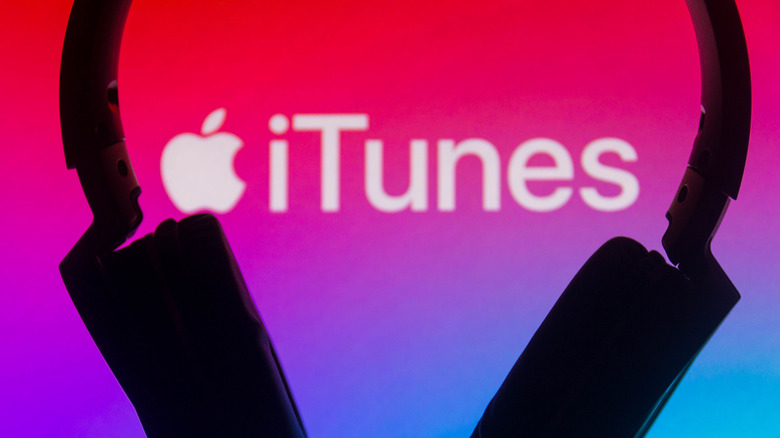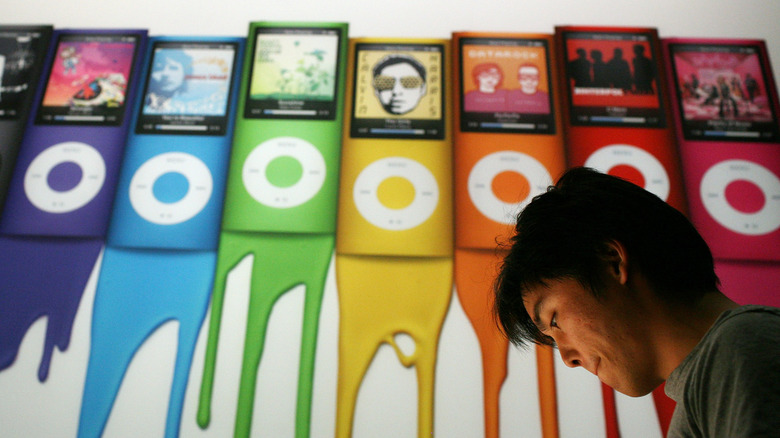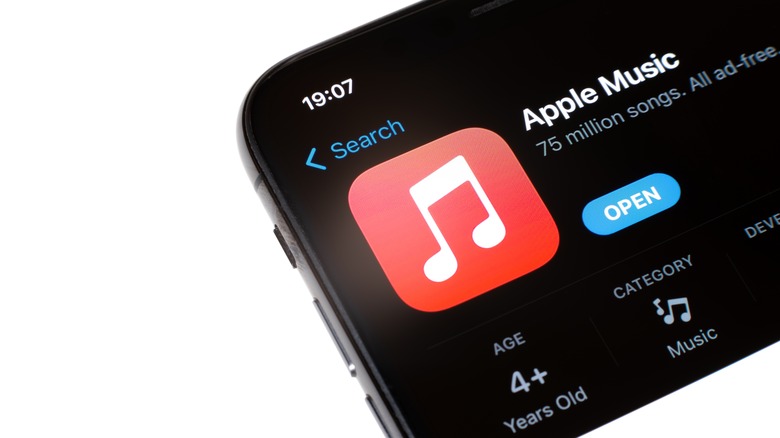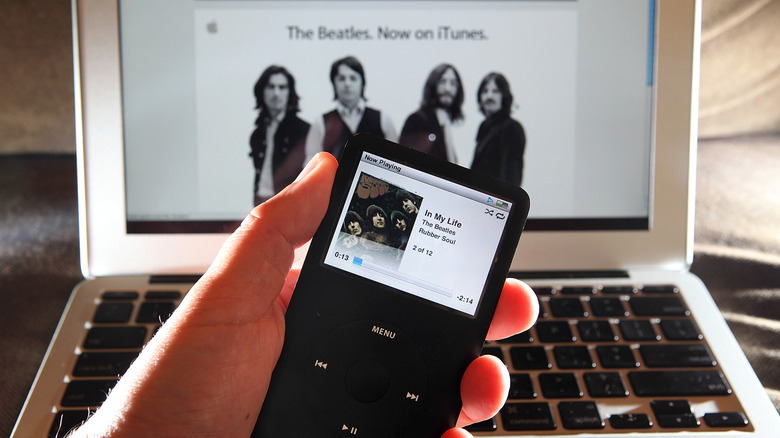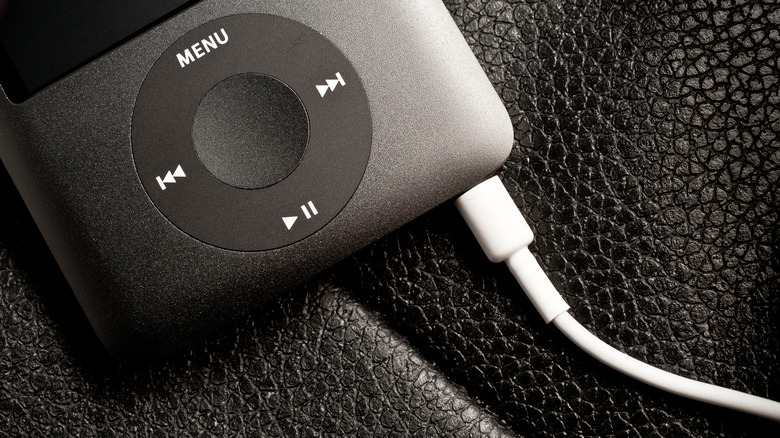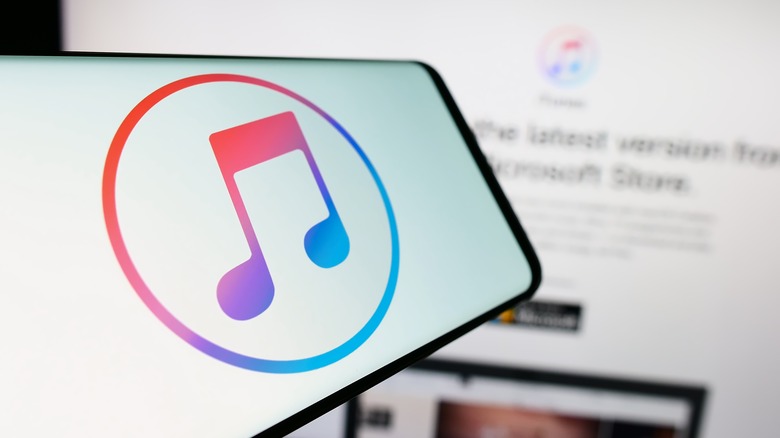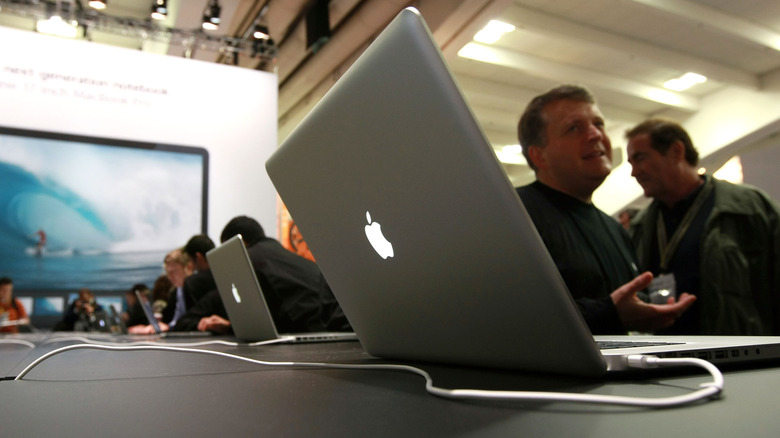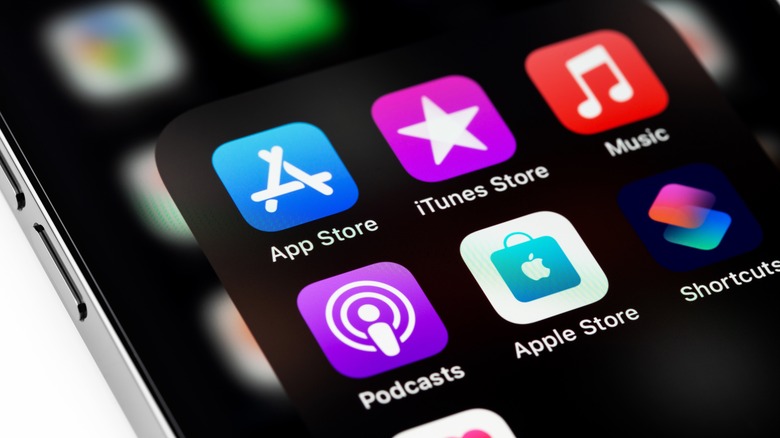8 Of Apple's Biggest Mistakes With iTunes
Launched in 2001 as a revolutionary solution to the chaos of music piracy, iTunes quickly became the epicenter of digital media consumption. It ushered in a new era, transforming how people buy, organize, and enjoy their favorite songs. However, as the years rolled on, iTunes wound up entangled in a web of missteps that left users scratching their heads and, at times, questioning Apple's once unassailable design prowess.
From its humble beginnings as a music player and organizer, iTunes became an unwieldy behemoth attempting to juggle music, movies, TV shows, podcasts, and more under one roof. As Apple's ambitions expanded, so did iTunes' complexity. The once-intuitive platform began to buckle under the weight of its features, leaving users bewildered and yearning for a more streamlined experience.
Despite being a pioneer in the digital music realm, Apple's refusal to embrace subscription-based models early on became a defining misstep. As competitors pivoted towards services like Spotify, Apple clung to the traditional pay-per-track approach, creating a divide between those willing to adapt and those reluctant to open their wallets for individual downloads. It was a gamble that saw iTunes losing its once-unquestionable dominance in the digital music space.
While iTunes was meant to be a unifying force, its foray into the Windows ecosystem became a battleground of performance issues and user dissatisfaction. The Windows version of iTunes often lagged behind its Mac counterpart, earning a reputation for sluggishness and instability that persisted for years. The disconnect between Apple's hardware-software synergy and the Windows experience became a stark reminder that even the biggest companies can struggle to bridge the gap.
iTunes Ping
Unveiled in 2010 with much fanfare, iTunes Ping was Apple's attempt to infuse social networking into the iTunes experience. The vision was ambitious: a platform where users could follow their favorite artists, discover new music, and share their musical tastes with friends.
In theory, Ping sounded like a potentially great addition to the iTunes repertoire, promising to transform the solitary act of music consumption into a social act akin to MySpace before it. However, in practice, Ping hit a series of flat notes that echoed far beyond Cupertino. The integration of a social network within a media player seemed promising, but its implementation left users feeling out of tune.
One of Ping's fundamental missteps was its isolation. Rather than leveraging existing social networks or allowing for cross-platform interaction, Apple attempted to create a closed ecosystem. Users could only connect with friends who also had Ping accounts, severely limiting the potential for widespread adoption. In an era dominated by platforms like Facebook and Twitter, this insular approach curbed Ping's success.
Furthermore, Ping's interface left much to be desired. Navigating the platform proved clunky, and the user experience was far from seamless. The lack of integration with popular social networks meant that users had to build their musical networks from scratch, a process bordering on cumbersome and time-consuming. For a company known for its commitment to user-friendly design, Ping stood out as an awkward departure from Apple's usual standards.
Privacy concerns also played a significant role in the eventual shutter of Ping. Users were wary of the platform's automatic following feature, which allowed artists to follow users without explicit consent. This led to a barrage of unintended connections, creating a sense of intrusion rather than fostering genuine connections.
iCloud Music Library and Apple Music
Launched alongside Apple Music in 2015, the interconnection between the new service and your pre-existing iTunes library seemed like a no-brainer. On the surface, the concept was alluring — a seamless integration of personal music libraries with the vast offerings of Apple's streaming service, creating a unified experience. However, as users dove into this melodic marriage of local and streaming libraries, dissonance emerged, revealing several issues that left many scratching their heads.
One of the key challenges was the ambiguity surrounding the merging of personal libraries with the Apple Music catalog. The idea was that iCloud Music Library would scan users' local music collections, matching tracks with those available on Apple Music, and making them accessible across all devices. However, the execution proved to be a double-edged sword. Users experienced frustrations ranging from mislabeled songs and albums to outright replacements of carefully curated tracks with alternate versions from the streaming catalog.
The main issue, of course, was the integration of Apple Music and iTunes which further complicated matters. The decision to house both streaming and locally stored content within the same app stirred controversy. Users found themselves navigating through a labyrinth of menus and tabs, attempting to distinguish between songs they owned and those available through the subscription service. The once-streamlined iTunes interface became cluttered, and reflected a departure from the simplicity that defined Apple's design philosophy.
The introduction of Apple Music also marked a strategic shift toward a subscription-based model, leaving some longtime iTunes users feeling alienated. The forced integration of Apple Music into the iTunes experience emphasized Apple's push towards streaming. The absence of a clear delineation between purchased and streamed content contributed to a sense of unease among users.
Various content disputes
One of the earliest and most high-profile content disputes of iTunes involved Apple Records, the label founded by The Beatles. In 2003, Apple Inc. found itself entangled in a legal battle with Apple Corps, the parent company of Apple Records, over the use of the Apple logo and the term "Apple" as it pertains to music. The dispute, rooted in a prior agreement dating back to the 1980s, highlighted the divergent paths the two companies had taken. Ultimately, a settlement was reached in 2007 that allowed both entities to coexist in the music sphere, but the legal wrangling left a mark on iTunes' journey, emphasizing the complexities of branding in the digital age.
A more protracted and impactful dispute emerged with Universal Music Group (UMG), one of the world's largest music conglomerates. Tensions arose in 2007 when UMG, dissatisfied with iTunes' fixed pricing model of 99 cents per track, sought variable pricing that would allow for premium pricing on in-demand tracks. This negotiation impasse resulted in a temporary removal of UMG's music from the iTunes Store.
In a separate incident, iTunes faced turbulence in its relationship with NBC Universal. In 2007, NBC Universal opted not to renew its contract with iTunes, expressing dissatisfaction with Apple's fixed pricing structure and seeking more control over the pricing and packaging of its content. This decision led to a temporary absence of popular NBC shows, such as "The Office" and "Heroes," from the iTunes Store.
Although NBC eventually returned to iTunes in 2008, the episode shed light on the evolving dynamics of content distribution in the digital era. Networks and content creators were no longer willing to cede control to platforms like iTunes, signaling a shift in the balance of power within the entertainment industry.
Security risks
As users globally entrusted their digital sanctuaries to the protection of iTunes, the emergence of unauthorized third-party updates cast a shadow over the platform's integrity. The vulnerability in question opened the door for attackers to exploit the software updating mechanism, potentially delivering malicious payloads to unsuspecting users who believed they were installing legitimate updates. This posed a significant risk, as compromised updates could lead to a range of security breaches, from unauthorized access to sensitive user information to the introduction of malware into users' systems.
While Apple eventually addressed the vulnerability, the incident exposed a potential blind spot in the company's security protocols. The delayed response raised questions about the agility of one of the world's most valuable tech companies in the face of emerging threats. For users, it became a stark reminder that even tech giants are not impervious to the relentless pursuit of vulnerabilities by malicious actors.
To make matters worse, Apple apparently had advance notice of the issue nearly four years out. This revelation made soon after previous security incidents raised questions about the robustness of iTunes' defenses against evolving cyber threats. The fact that Apple had been alerted about the flaw, yet failed to implement immediate safeguards added an element of concern. As iTunes users grappled with the potential risks, the narrative of iTunes' security vulnerabilities became an integral part of its legacy, influencing user perceptions and shaping the expectations of digital consumers.
U2's Songs of Innocence
In a surprising turn of events in 2014, Apple gifted all iTunes users a copy of U2's album "Songs of Innocence," aiming to celebrate the band's return to music. While the gesture may have been well-intentioned, the execution struck a discordant note with users, sparking a wave of discontent.
The decision to automatically push the album to every user's library was bold, and one underscored the potential pitfalls of unchecked generosity. While U2's global fanbase rejoiced at the unexpected gift, several iTunes users were left bewildered and, in some cases, downright outraged. The concept of a universally gifted album clashed with the personalized, on-demand nature of digital music consumption, and Apple found itself facing a backlash from users who felt their digital sanctuaries had been invaded.
The automatic delivery of "Songs of Innocence" raised questions about user consent and control over personal libraries. Critics argued that the move infringed upon the principle of choice, forcing users to accept an album into their collections without explicit permission. Beyond the issue of consent, the U2 album giveaway also highlighted a broader concern: the blurring line between promotional content and personal libraries. iTunes, once a bastion of user-curated collections, was now a platform where corporate decisions could directly influence the content of individual libraries. The incident became a cautionary tale highlighting the delicate balance companies must strike when integrating promotional efforts into personal spaces.
As discontent brewed, Apple CEO Tim Cook and Bono each apologized publicly for any offense caused, acknowledging that the execution of the U2 album giveaway had missed the mark. This episode marked a rare admission of fault from Apple, signaling the company's recognition of the need to tread carefully in the intersection of corporate partnerships and user experience.
FairPlay DRM
For years, Apple's proprietary DRM (Digital Rights Management) system shackled the user experience, stirring discontent among iTunes users. FairPlay DRM, introduced in 2003, was Apple's attempt to balance content protection and user convenience. While its primary purpose was to prevent unauthorized copying and distribution of digital media, the unintended consequences were felt acutely by those who simply wanted to enjoy their purchased content across different devices and platforms.
The most glaring limitation of FairPlay DRM manifested in the restricted interoperability of iTunes-purchased content. Music, movies, and TV shows adorned with the FairPlay seal could only be played on Apple devices or through iTunes, locking users into an ecosystem that lacked the flexibility increasingly demanded in the digital age. The asymmetry between Apple's closed system and the growing array of multi-platform devices left users grappling with the frustrating reality that the content they owned was not truly theirs to control.
This digital confinement became particularly evident in the realm of music. Tracks purchased from the iTunes Store came wrapped in the FairPlay DRM layer, inhibiting users from freely transferring their music to non-Apple devices or sharing it with those on different platforms. The resulting frustration and limitations ran counter to the evolving ethos of a connected, cross-platform world.
The contentious nature of FairPlay DRM reached its zenith in 2007 when Steve Jobs, Apple's co-founder and CEO at the time, penned an open letter titled "Thoughts on Music." In it, Jobs expressed his desire to eliminate DRM restrictions, citing the inconveniences it imposed on users and arguing that music should be playable on any device. While the letter signaled a shift in Apple's stance on DRM, it took several more years for substantial changes to be implemented.
iTunes' clunky UI
In the grand stage of digital media players, iTunes took center stage for nearly two decades, but its interface often resembled a performance marred by awkward choreography. For many users, the journey through iTunes was a labyrinthine experience, navigating a landscape cluttered with menus, tabs, and features that seemed to compete for attention rather than harmonize in a seamless user interface (UI).
From its early days as a music organizer to its later reincarnations encompassing movies, TV shows, podcasts, and more, iTunes struggled to maintain a cohesive and intuitive design. The initial simplicity that defined its debut era gave way to an increasingly complex UI that left users grappling with a maze of features and options. As iTunes expanded its repertoire, the interface became a mess of disparate elements, each vying for attention in an interface that often felt less like a symphony, and more like a cacophony.
One of the primary critiques centered on the organization of content. As iTunes evolved beyond its music-centric origins, the challenge of seamlessly integrating diverse media types became evident. Users found themselves navigating through convoluted menus, toggling between sections for music, movies, TV shows, and more. The once-streamlined experience transformed into a clunky dance, with users often struggling to locate their desired content amidst the digital clutter.
The introduction of the iTunes Store further muddied the waters. While the ability to purchase and download content seamlessly was a revolutionary concept, the store within the app added layers of complexity. Users faced a visual barrage of promotions, recommendations, and featured content, overshadowing the simplicity of the original iTunes design. The harmonious flow that marked the early versions of iTunes gave way to a UI that felt like a crowded marketplace rather than an intuitive media player.
iTunes' bloat
In the early days of its inception, iTunes stood as a streamlined maestro of digital music, offering a simple and elegant solution to the chaos of music organization. However, as time progressed, iTunes found itself becoming more and more bloated, an issue Apple even acknowledged.
The seeds of bloatware were sown with each expansion of iTunes' capabilities. Movies, TV shows, podcasts, apps, and more were crammed into the once-sleek framework, transforming iTunes into a digital Swiss Army knife — a tool with several functions, but one that became increasingly cumbersome to wield.
The advent of iCloud Music Library and Apple Music in 2015 further exacerbated the bloatware dilemma. The integration of streaming services within the existing framework introduced a complex interplay between owned and rented content. Users grappled with the nuances of local libraries versus cloud-based collections, adding another dimension to the intricate iTunes ecosystem. As big of an effect as all of this had on the UI experience, it also had notable effects on the software's performance.
Windows users, in particular, felt the weight of iTunes' bloatware burden. The Windows version of the application, while functional, frequently lagged behind its Mac counterpart in terms of performance and responsiveness. The disparity in user experience between operating systems underscored the challenges of maintaining a cohesive platform across diverse environments.
As users increasingly vocalized their frustrations, Apple recognized the need for change. In 2019, the company bid adieu to an iTunes which was living on borrowed time, opting for a more modular approach with standalone apps dedicated to specific media types. The decision to split up iTunes marked a pivot away from the bloatware model that had characterized iTunes in its later years, acknowledging that a more focused and streamlined user experience was paramount.
